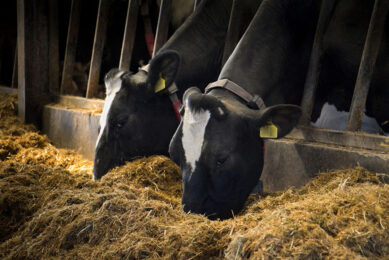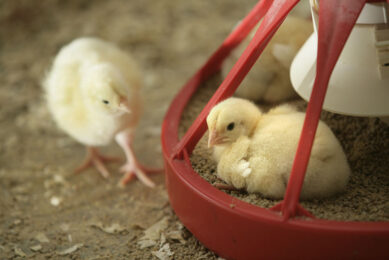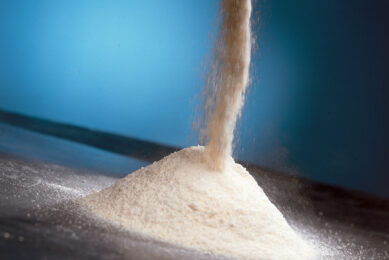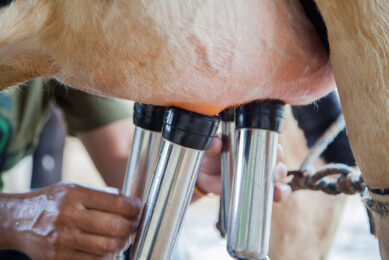National Feed in Abu Dhabi: Focus on quality
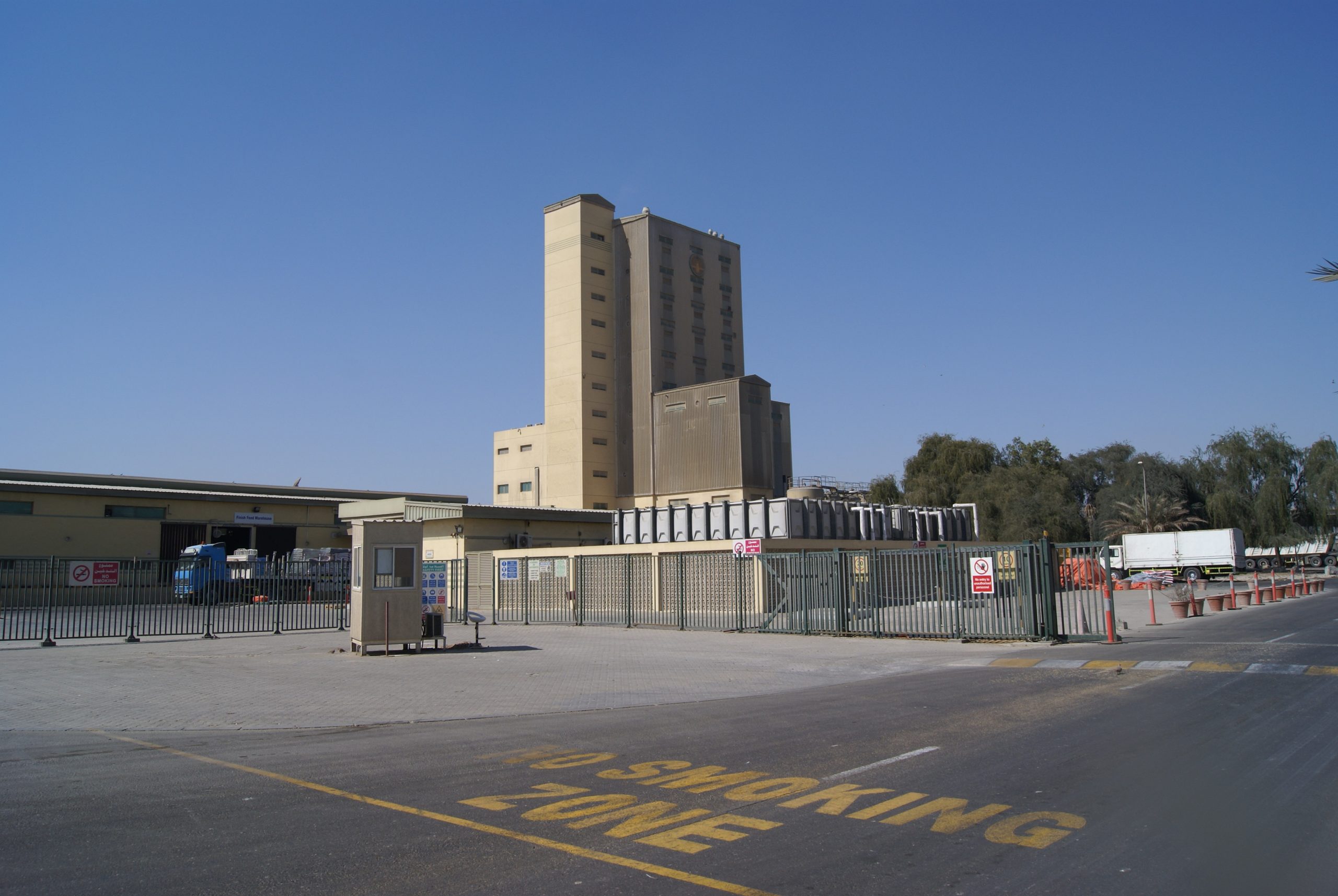
Producing animal feed is all about quality, according to the nutritionists at National Feed and Flour, one of the largest feed mills in the United Arab Emirates. “But we still need to educate farmers that cheap feed doesn’t always bring the best return on investment.” All About Feed visited this mill to learn more.
Farming and producing feed in remote and dry areas such as a desert is always fascinating. Farmers and millers have to deal with drought, scarcity of raw materials, heat stress in dairy cows just to name a few. But also other challenges for feed millers are present in this area of the world. Customers are sometimes too much focused on having the cheapest feed possible and are sometimes not aware of the need for quality feed and the benefits gained (in higher production for example).
A topic that is close to the hearts of the nutritionists working at National Feed and Flour Production and Marketing (NFFPM). NFFPM was founded in 2001 and is considered one of the leading manufacturers and distributors of animal feed in the United Arab Emirates. When speaking to the lead nutritionists at its headquarter in Mussafah, Abu Dhabi, poultry nutritionist John R Wills and ruminant nutritionist Dr Ahmed Ali, the passion for diet formulation and producing top quality feed becomes clear. Both started around 3 years ago at NFFPM, before having worked for many years as animal nutritionists in countries like the US and Australia. They work as a close team in controlling the quality of the raw materials, the diet formulation, introducing new formulas, educating farmers and veterinarians and much more.
High focus on quality
The knowledge and passion that these 2 nutritionists brought to NFFPM contributes to the fact that the feed company has blossomed into one of the leading animal feed production companies in the United Arab Emirates (UAE) over the last years. Dr Wills, a poultry specialist, originating from the USA made a big difference since joining the company in the UAE by stepping up the diet formulations of the different feeds produced. He has over 40 years’ experience in poultry.

“Quality is key, but what is the definition of a quality feed? Everyone has their own definition. But for us, it is all about using raw materials with consistent high quality.” He explains that making the feed formula is the easy part. “It is important to test the diet, which is made behind the computer, in the field. Some nutritionist in this area don’t even go to the farms, or only talk to customers in the office. This is why we put a lot of time and effort into visiting our clients, entering the poultry and cow barns, and seeing how the animals react to the feed. This is important feedback and you need to see it with your own eyes if the animals are healthy and responding well to the feed formulation we made on paper. NFFPM operates 2 state of the art accredited laboratories located in each of its sites. NFFPM is also ISO and HACCP certified. Quality is also reflected in the close attention to proper mixing of the ingredients and additives used. “We work with a maximum variation of 10%. Accuracy is key and by paying close attention to this we know for sure that every batch of feed that leaves the mill is mixed correctly,” explains Dr Wills. Dr Ahmed Ali, ruminant specialist explains: “We are using the latest technology to make feed. Only then we can assure a high quality. As said earlier, this starts with the sourcing of the raw materials. We are sourcing top quality soybean meal from the US and Brazil, corn from Argentina, barley grain from Australia and all the feed additives from well-known suppliers, mainly from Europe and the US.

Feed plants including safety stock
NFFPM operates 2 animal feed plants, one in Mussafah, Abu Dhabi and one in Jebel Ali, Dubai. The company produces feed for ruminants, poultry, camels, pets, wildlife and laboratory animals. The first plant specialises in ruminant feed production with an annual capacity of around 250,000 metric tons, is located on a 165,000 square meters production facility in Mussafah, Abu Dhabi. This feed mill employs cutting-edge technology supplied by prominent European manufacturers, and is equipped with a fully automated control system. The facility also includes grain storage silos, flat storage warehouses, and a logistics and maintenance centre. The second plant specialises in poultry feed production and has an annual capacity of around 350,000 metric tons. This plant is located in Jebel Ali Free Zone (JAFZA). Its leading edge machinery and equipment enables it to produce a variety of poultry feeds of different stages and ensures that the maximum standards of feed quality are not only met, but exceeded. The plant includes a 45,000 metric tons grain storage terminal. Dr Ali: “At the feed mill location in Mussafah we also have a safety stock of 2,000 tons of complete feed at any time. In practice, we use the first-in first-out system and constantly sell and add fresh feed to this safety stock (to keep it at a constant level).

Moving away from cheap feed
“Unfortunately, and just like in many countries around the world, strong focus on getting the cheapest feed possible is also seen in the UAE itself. The price of the feed is not important, but the lowest costs per kg of milk or feed. The feed NFFPM produces is not the cheapest available, as the company is adding a lot of science and knowledge to its feed formulations. But the return on investment will be higher.” But to satisfy a broad range of clients, NFFPM has classified its portfolio of feed products into high end feed, middle feed and cheap / basic feed (for maintenance for example if people have hobby animals). “We have this classification already for some years now, but interestingly enough we see clients moving from the cheap and middle section to the higher end,” according to Dr Ali.
Educating farmers and vets
The reason why more clients are seeing the benefits of the higher quality (and hence a little bit more expensive) feed is all about education, says Dr Ali. “In the UAE, when a problem occurs, most farmers blame the feed. That is a shame, but can also be the result of choosing to buy cheap feed. We need to train and educate the clients to not always go for the cheapest feed. Often farmers direct their nutritional questions to the veterinarian, who is not a nutritionist. They are often not aware of terms like ADF, NDF, protein levels, RUP, etc., but we also get questions about the use of hormones and antibiotics and constantly have to explain that we are not using any of these in our finished feed. But luckily, this mindset is changing rapidly in the UAE, as we not only educate the farmers, but also the veterinarians. This accounts for both the ruminant as the poultry clients. Dr Wills: “Crude protein is the term most people are familiar with and crude protein doesn’t say anything. We formulate on digestible amino acids. By doing that, it provides a better balance of amino acids that are needed for the hen and broiler to produce. Our feed costs become more efficient and environmental friendly, as we are not putting a lot of nitrogen into the environment. Dr Ahmed Ali: “We work closely with our customers, it is not just sitting behind the computer and formulating diets. Most designs are not balancing the nutrients properly. Adding too much salt for example. Lots of change happing in the last 3 years, a lot of customers are changing to our feed mill.”

Beginning to dominate market
Today, the feed produced by NFFPM has gained a very good reputation and many clients within the UAE and surrounding countries have become clients over the past couple of years. “Most dairy farmers are able to produce 30 litres per cow per day in the desert. But with good nutrition, even in these harsh conditions you can reach 40 litres per cow per day. Do the science, opting for cheap feed is not an option anymore. We are beginning to dominate the market, so we are obviously doing something right,” concludes Dr Wills.




